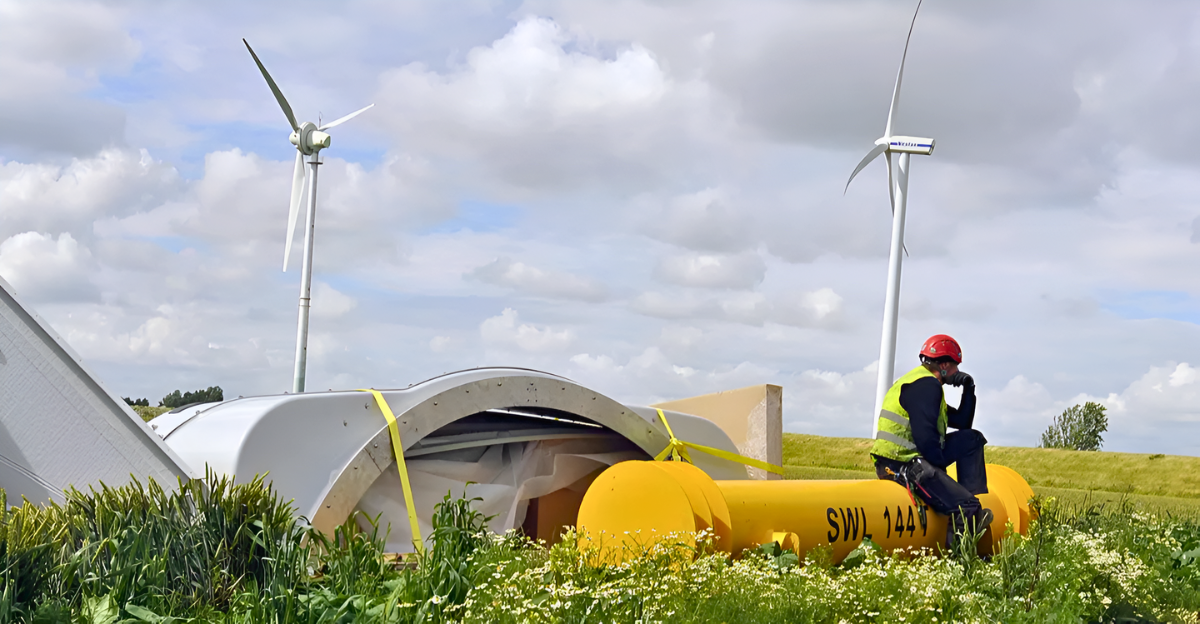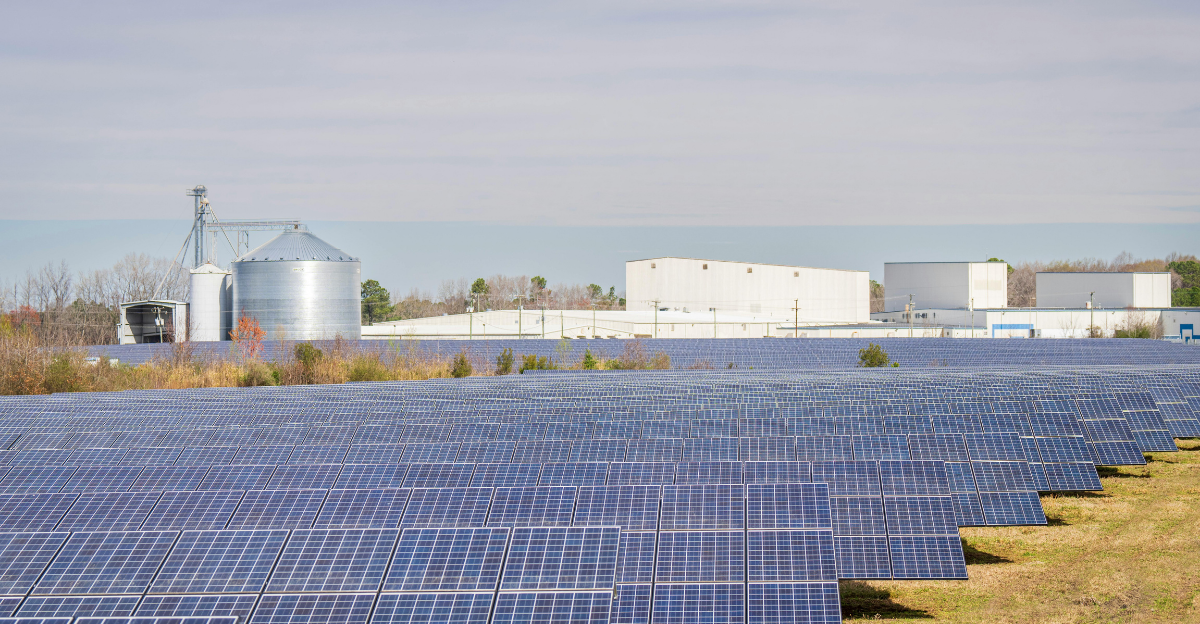
US energy policy is undergoing a dramatic change as a result of the $7 billion tax bomb that the “One Big Beautiful Bill” (OBBBA) delivered to the wind and solar industries, drastically changing the renewable energy landscape. The bill is designed to destroy the economic viability of both new and existing renewable projects by enacting high new taxes, up to 50% on wind and 30% on solar for projects that include any Chinese components, and quickly eliminating essential tax credits.
This tax bomb is a purposeful policy shift that upsets the delicate balance between supply chains, financing, and market confidence. It is more than just a fiscal measure. The magnitude and abruptness of these shifts breed uncertainty, which stifles investor zeal, delays project pipelines, and jeopardizes the larger shift to a low-carbon economy.
From Boom to Bust

Thanks to tax breaks under the Inflation Reduction Act (IRA) and a global movement toward decarbonization, solar and wind have grown from niche technologies to become significant sources of energy in the United States over the last ten years. Particularly in the heartland and sunbelt states, these incentives spurred billions of dollars in investment and over 400,000 jobs, revolutionizing rural economies and establishing new industrial centers.
History shows that sudden changes in policy can disrupt entire supply chains, stop growth, and cause shockwaves to manufacturing, construction, and rural economies that placed their bets on renewable energy. This historical trauma could be replicated on a much larger scale by the current tax bomb, which could undo years of advancements in clean energy innovation and adoption.
The Mechanisms and Magnitude of the Tax Bomb

A two-pronged attack is introduced by the new legislation: an accelerated phase-out of all major tax credits for projects after 2027, and a direct tax hike of 30% on solar and 50% on wind for projects with Chinese components. Due to the widespread use of Chinese components in international supply chains, which predominate in photovoltaic cells and wind turbine components, these taxes are practically impossible to avoid.
A pillar of sound economic policy, regulatory certainty, is fundamentally violated by this retroactivity, which also runs the risk of igniting expensive legal action and contract disputes. Additionally, the tax bomb makes supply chain bottlenecks worse by forcing manufacturers to find substitute parts, which are frequently more costly and less reliable.
Economic Repercussions: Employment, Investment, and Development

Investment in renewable energy and job creation are about to be destroyed by the OBBBA’s tax bomb. Up to 2.3 million jobs could be lost, according to analysts, and 300 gigawatts of planned capacity, enough to power hundreds of millions of people, are now in jeopardy. According to the Brattle Group, eliminating clean energy incentives would result in a total loss of 3.8 million job-years by 2035.
Communities that now rely on renewable energy projects for economic vitality are also affected, especially those in rural and economically distressed areas. Decades of advancements in workforce development, innovation ecosystems, and regional economic diversification could be undone by the abrupt removal of incentives.
Impact on Consumers: Rising Prices and Unstable Grid

Customers will not be spared. Electricity costs are expected to increase by 8–10% nationwide if renewable energy sources are ignored. With data centers and artificial intelligence driving record energy demand, the abrupt removal of wind and solar capacity puts grid reliability at risk and increases the risk of blackouts and price spikes.
The timing couldn’t be worse; the grid needs more clean capacity to meet demand reliably and affordably as electrification speeds up in industry, transportation, and heating. Utility companies will be forced to rely more on fossil fuels, which are vulnerable to unstable international markets and geopolitical risks, as a result of the tax bomb’s chilling effect on renewable energy sources, further destabilizing prices.
Supply Chains and Geopolitics: Weaponizing Energy Policy

The bill’s insistence on “no Chinese components” weaponizes supply chains and makes most projects nearly impossible to complete. Given the global dominance of Chinese solar and wind components, the stated goal of increasing domestic manufacturing actually amounts to a de facto ban on new projects. China manufactures a large portion of wind turbines and about 80% of the world’s photovoltaic cells, making compliance extremely challenging.
By increasing reliance on erratic foreign energy markets, this action may encourage American businesses to look for dirtier, less expensive energy sources overseas, undermining national security and climate goals. Additionally, the policy runs the risk of increasing trade tensions and inciting retaliatory actions that could further upset international supply chains.
Winners and Losers: The New Order, Nuclear, and Fossil Fuels

The OBBBA tilts the playing field in favor of nuclear and fossil fuels, while renewables are doomed. A shift to baseload sources is encouraged by the expansion of the definition of “advanced nuclear facilities” and the addition of new tax credits for coal producers. This change is costly and regressive, though, as studies reveal that 99% of coal plants in the US are more expensive to operate than new wind or solar.
Despite being low-carbon, nuclear energy is not a viable short-term alternative to renewables due to its lengthy lead times and substantial cost overruns. The revival of the fossil fuel industry puts the economy at risk of future carbon pricing or regulatory shocks, undermining climate commitments, and locking in decades of carbon-intensive infrastructure.
Second-Order Impacts: Global Competitiveness, Innovation, and Climate

The repercussions go well beyond energy. Future economic growth depends on innovation in storage, smart grids, and electrification, all of which will be halted by the collapse of renewable energy. The United States’ climate goals will become unachievable, undermining its reputation abroad and giving Europe and China more influence.
As a result, the tax bomb poses a threat not only to the energy markets but also to the larger innovation ecosystem that supports economic competitiveness in the twenty-first century. Innovation in battery technology, grid management, and carbon capture, technologies crucial to deep decarbonization, will be delayed if renewables innovation loses steam.
Extreme and Contrarian Scenarios: What Happens If the Grid Fails?

Imagine a situation where the planned capacity loss of 300 GW clashes with the growing demand from data centers and artificial intelligence. Blackouts become commonplace, and emergency protocols necessitate a rush for coal and diesel, increasing expenses and emissions. Once thriving on wind and solar projects, rural communities are now experiencing outmigration and unemployment.
As enemies take advantage of America’s energy vulnerability, the United States may, in a dramatic turn of events, become a net importer of clean energy technology, undoing decades of advancement and innovation. Grid operators have already warned of tight reserve margins and an increase in the frequency of extreme weather events, so this scenario is not out of the question.
A Willful Self-Destructive Action

The $7 billion tax bomb is a calculated act of self-destruction for the American energy industry, not merely a change in policy. The OBBBA runs the risk of increased costs, job losses, unstable power grids, and lost global leadership if it suppresses wind and solar. This is a surrender to the past at the expense of the future; it is not creative destruction.
The law disregards the interdependence of contemporary energy systems, the necessity of addressing climate change, and the financial potential inherent in clean energy innovation. It could condemn the United States to an era of increased expenses, increased emissions, and diminished power. The strategic lesson is unmistakable: energy policy needs to be stable and visionary rather than destructive and reactive.







